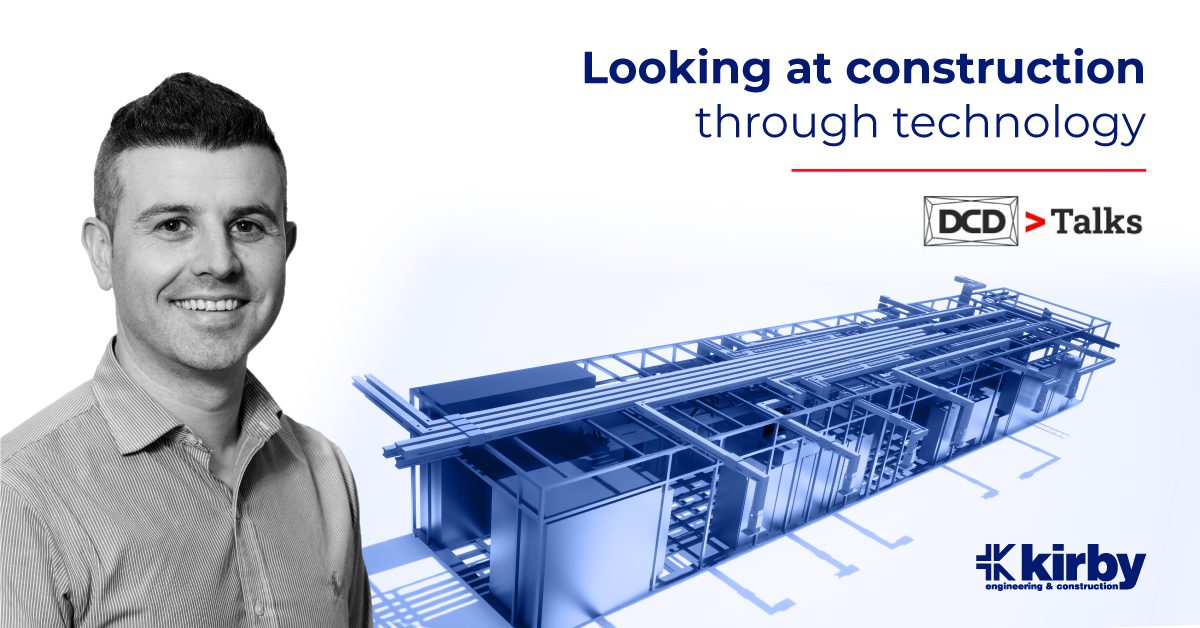Kirby tells us about the new technologies they use to improve construction.
DCD Opinions speak to Mark Danaher, Kirby Group Engineering.
As with any industry, the data centre sector is competitive. But over the past few years, that has become a little intense.
With demand on the up and the supply chain, well if not missing a few links then struggling to manage a smooth connection, competition has been fierce and with that has brought innovation and out-of-the-box thinking to the max.
At our recent DCD>Connect event in London, Kirby Engineering Group’s Mark Danaher let us in on a few of the tools of the trade Kirby has been using.
“A number of years ago, we looked at what kind of innovation, what kind of technology can be used to make the construction phase of the data centre leaner and produce value for ourselves which makes us more efficient, and able to then release value for our clients,” said Danaher.
“So what we did was we invested in 3D modelling at a very early stage, back in 2012. We then developed from there. We thought, okay, we have a 3D modelling department where we can model this data centre at the design stage before anyone is even building anything, but what do we do when we’re on site? How can we develop the project and choose leaner approaches? So, we started looking at off-site manufacturing.”
3D modelling, while somewhat futuristic sounding, is nothing particularly new to the sector, and neither is off-site manufacturing. But combined with a few additional tools, Kirby has managed to find a far more efficient method of constructing the massive data centres they are entrusted with.
“3D modelling and digital construction really lead to off-site manufacturing, and then once we were building, we began to wonder what we could do while we were building,” Danaher went on to explain. “That was when we began using technology like augmented reality, and total station robot setouts. So, all of the equipment that we’re setting out on site, the switchgear, the UPS, all that equipment is geo-located on the site directly from the model.”
With schedules compressed by supply chain challenges, the prospect that these solutions can make construction simpler and easier is immediately very appealing.
“What we’ve been working on is building as much as we can off-site so that while the civil work or the groundwork is being done, we’re actually building in a factory so that once that structure is done, we can bring our equipment or systems or modules in.”
So, what are the additional tricks that Kirby has found particularly helpful? If you thought 3D modelling was futuristic, this will seem like science fiction.
“We’ve been investing in augmented reality for a number of years. It might sound kind of crazy for a construction company, but we’ve been using the Microsoft HoloLens to make our site more connected, where we’re overlaying the model on the site before any of the systems are in place. So, for example, if you have a data centre, and you have your structural and steel work in place, you can put on the HoloLens and ‘walk’ the site.
“You can actually see where the modules that we would make are going to be installed, you can actually physically walk through your switch room, and you can see where the equipment is going to be, you can see how the cables are going to be planted, you can see how you’re going to get access to the equipment for facility maintenance.
“But then taking it a step further in construction, we can then see how the building has been built, and we can overlay our 3D model onto that, and we can see any variations. So we can put on the HoloLens, we can walk to site and we can see okay, that steel has actually been installed a little differently, our module isn’t going to fit, so we go back and we adjust our 3D model and we build to what suits on site.”
In order for this to work effectively, Kirby then has to has to employ point cloud scanning – a method of effectively measuring an area to capture its size or layout in 3D.
“We’ve been very good at taking the point cloud scans and processing the data very quickly. So that’s been connected from the site directly back to our back offices, so any change that’s needed is completed very quickly.
“We want to build this thing right the first time, we don’t want to rework, and we don’t want waste. So augmented reality, point cloud scanning, and 3D modelling combined have enabled that.”
With this technology, the task of getting the data centre built and ready has been significantly simplified. There is no longer the risk of building something just for it to need to be redone, and Kirby maintains its position as a recognized leader in its industry.
Watch the full DCD>Talk with Mark Danaher here.

